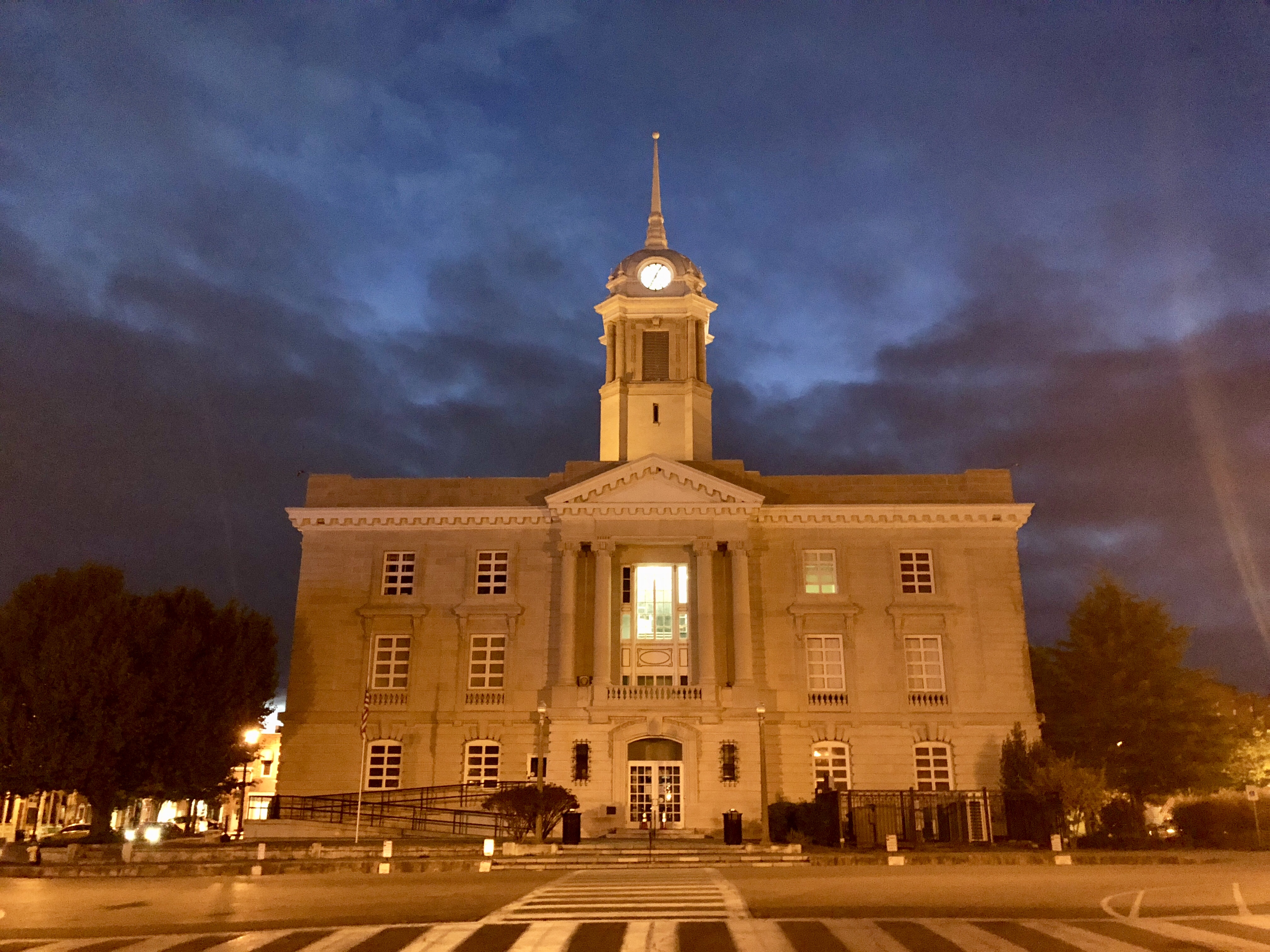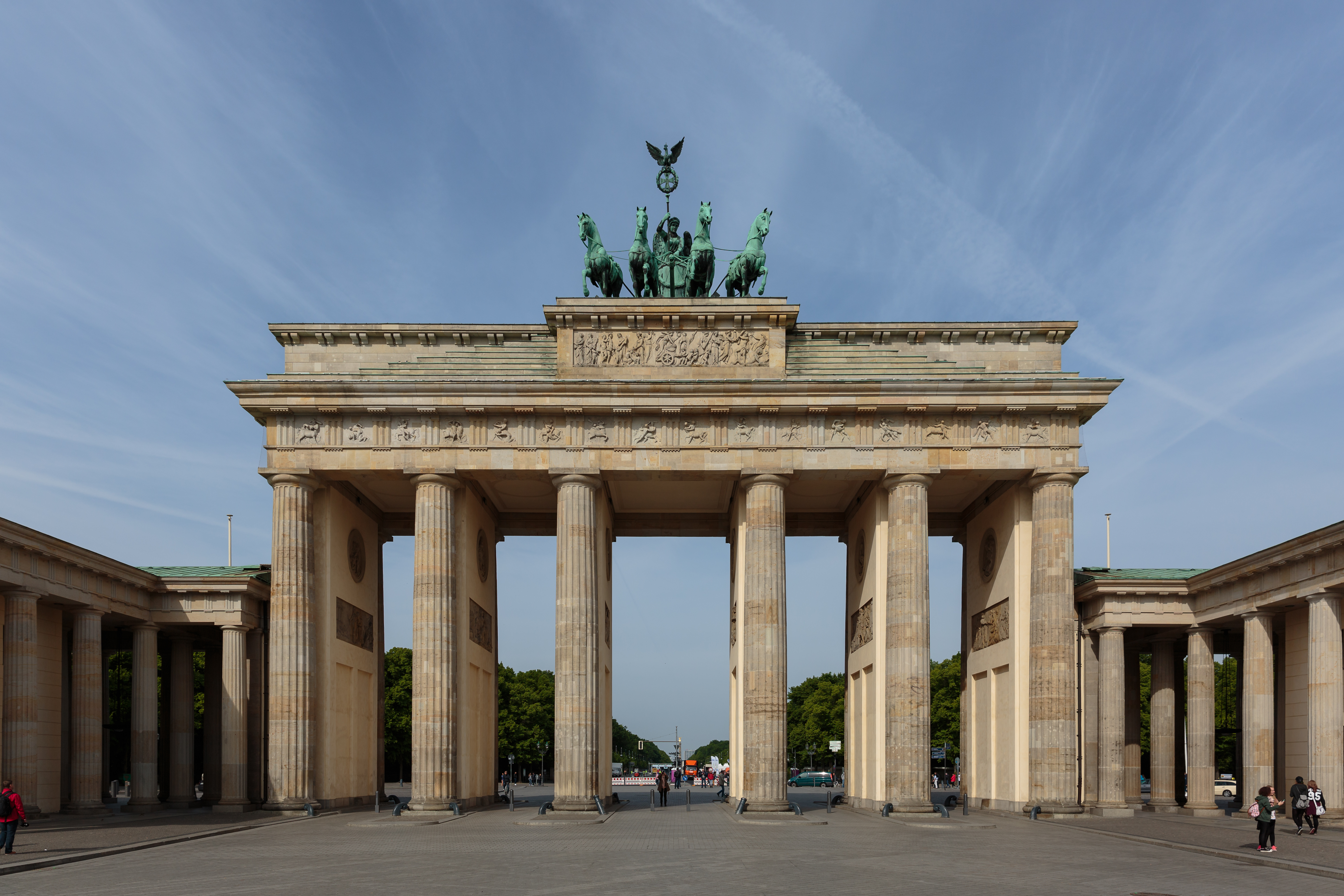|
State Bank Of Tennessee
The State Bank of Tennessee building is a historic building in Columbia, Tennessee, USA. It was built by Nathan Vaught from 1839 to 1840. It was designed in the Greek Revival architectural style. It has been listed on the National Register of Historic Places The National Register of Historic Places (NRHP) is the United States federal government's official list of districts, sites, buildings, structures and objects deemed worthy of preservation for their historical significance or "great artist ... since November 2, 1978. The building was a branch of the Third Bank of Tennessee, established in 1838 to finance infrastructure projects and public schools. The branch's history was brief and troubled; it was robbed soon after it opened and it failed in 1843, after which the building held private tenants. References Bank buildings on the National Register of Historic Places in Tennessee Greek Revival architecture in Tennessee Buildings and structures completed in 1840 ... [...More Info...] [...Related Items...] OR: [Wikipedia] [Google] [Baidu] |
Columbia, Tennessee
Columbia is a city in and the county seat of Maury County, Tennessee. The population was 41,690 as of the 2020 United States census. Columbia is included in the Nashville metropolitan area. The self-proclaimed "mule capital of the world," Columbia annually celebrates the city-designated Mule Day each April. Columbia and Maury County are acknowledged as the "Antebellum Homes Capital of Tennessee"; the county has more Antebellum architecture, antebellum houses than any other county in the state. The city is home to one of the last two surviving residences of James K. Polk, James Knox Polk, the 11th President of the United States; the other is the White House. History A year after the organization of Maury County, Tennessee, Maury County in 1807, Columbia was laid out in 1808 and lots were sold. The original town, on the south bank of the Duck River (Tennessee), Duck River, consisted of four blocks. The town was incorporated in 1817. Columbia was the site of Jackson College (Te ... [...More Info...] [...Related Items...] OR: [Wikipedia] [Google] [Baidu] |
Nathan Vaught
Nathan Vaught (died 1880) was a builder in Tennessee who was responsible for several noteworthy buildings. A "master builder" from Maury County, Vaught was responsible for construction of The Athenaeum in Columbia, Tennessee. One of his works, Walnut Grove, in Mt. Pleasant, Tennessee, is a Greek Revival style building that was built in 1858. He built antebellum homes and some commercial structures. Many of his works are listed on the U.S. National Register of Historic Places. He died April 9, 1880, and is buried in Rose Hill Cemetery, in Columbia, Tennessee. Works include: *One or more works within Ashwood Rural Historic District, which spans US 43 between Columbia and Mount Pleasant, Columbia, TN, NRHP-listed * The Athenaeum, 808 Athenaeum St., Columbia, TN, NRHP-listed * Clifton Place, SW of Columbia on Mt. Pleasant Hwy., Columbia, TN, NRHP-listed *Columbia West End Historic District, Roughly along W. Seventh St. between Frierson St. and the Seaboard System RR, Columbia, TN, ... [...More Info...] [...Related Items...] OR: [Wikipedia] [Google] [Baidu] |
Greek Revival Architecture
The Greek Revival was an architectural movement which began in the middle of the 18th century but which particularly flourished in the late 18th and early 19th centuries, predominantly in northern Europe and the United States and Canada, but also in Greece itself following independence in 1832. It revived many aspects of the forms and styles of ancient Greek architecture, in particular the Greek temple, with varying degrees of thoroughness and consistency. A product of Hellenism, it may be looked upon as the last phase in the development of Neoclassical architecture, which had for long mainly drawn from Roman architecture. The term was first used by Charles Robert Cockerell in a lecture he gave as Professor of Architecture to the Royal Academy of Arts, London in 1842. With a newfound access to Greece and Turkey, or initially to the books produced by the few who had visited the sites, archaeologist-architects of the period studied the Doric and Ionic orders. Despite its ... [...More Info...] [...Related Items...] OR: [Wikipedia] [Google] [Baidu] |
National Register Of Historic Places Listings In Maury County, Tennessee
__NOTOC__ This is a list of the National Register of Historic Places listings in Maury County, Tennessee. This is intended to be a complete list of the properties and districts on the National Register of Historic Places in Maury County, Tennessee, United States. Latitude and longitude coordinates are provided for many National Register properties and districts; these locations may be seen together in a map. There are 68 properties and districts listed on the National Register in the county, including 2 National Historic Landmarks. There are two former listings. Current listings Former listings See also * List of National Historic Landmarks in Tennessee * National Register of Historic Places listings in Tennessee This is a list of properties and historic districts in Tennessee that are listed on the National Register of Historic Places. There are over 2,000 in total. Of these, 29 are National Hi ... [...More Info...] [...Related Items...] OR: [Wikipedia] [Google] [Baidu] |
Bank Buildings On The National Register Of Historic Places In Tennessee
A bank is a financial institution that accepts deposits from the public and creates a demand deposit while simultaneously making loans. Lending activities can be directly performed by the bank or indirectly through capital markets. Because banks play an important role in financial stability and the economy of a country, most jurisdictions exercise a high degree of regulation over banks. Most countries have institutionalized a system known as fractional reserve banking, under which banks hold liquid assets equal to only a portion of their current liabilities. In addition to other regulations intended to ensure liquidity, banks are generally subject to minimum capital requirements based on an international set of capital standards, the Basel Accords. Banking in its modern sense evolved in the fourteenth century in the prosperous cities of Renaissance Italy but in many ways functioned as a continuation of ideas and concepts of credit and lending that had their roots in the anc ... [...More Info...] [...Related Items...] OR: [Wikipedia] [Google] [Baidu] |
Greek Revival Architecture In Tennessee
Greek may refer to: Greece Anything of, from, or related to Greece, a country in Southern Europe: * Greeks, an ethnic group. * Greek language, a branch of the Indo-European language family. ** Proto-Greek language, the assumed last common ancestor of all known varieties of Greek. ** Mycenaean Greek, most ancient attested form of the language (16th to 11th centuries BC). ** Ancient Greek, forms of the language used c. 1000–330 BC. ** Koine Greek, common form of Greek spoken and written during Classical antiquity. ** Medieval Greek or Byzantine Language, language used between the Middle Ages and the Ottoman conquest of Constantinople. ** Modern Greek, varieties spoken in the modern era (from 1453 AD). * Greek alphabet, script used to write the Greek language. * Greek Orthodox Church, several Churches of the Eastern Orthodox Church. * Ancient Greece, the ancient civilization before the end of Antiquity. * Old Greek, the language as spoken from Late Antiquity to around 1500 AD. Ot ... [...More Info...] [...Related Items...] OR: [Wikipedia] [Google] [Baidu] |
Buildings And Structures Completed In 1840
A building, or edifice, is an enclosed structure with a roof and walls standing more or less permanently in one place, such as a house or factory (although there's also portable buildings). Buildings come in a variety of sizes, shapes, and functions, and have been adapted throughout history for a wide number of factors, from building materials available, to weather conditions, land prices, ground conditions, specific uses, prestige, and aesthetic reasons. To better understand the term ''building'' compare the list of nonbuilding structures. Buildings serve several societal needs – primarily as shelter from weather, security, living space, privacy, to store belongings, and to comfortably live and work. A building as a shelter represents a physical division of the human habitat (a place of comfort and safety) and the ''outside'' (a place that at times may be harsh and harmful). Ever since the first cave paintings, buildings have also become objects or canvasses of much artisti ... [...More Info...] [...Related Items...] OR: [Wikipedia] [Google] [Baidu] |
Buildings And Structures In Columbia, Tennessee
A building, or edifice, is an enclosed structure with a roof and walls standing more or less permanently in one place, such as a house or factory (although there's also portable buildings). Buildings come in a variety of sizes, shapes, and functions, and have been adapted throughout history for a wide number of factors, from building materials available, to weather conditions, land prices, ground conditions, specific uses, prestige, and aesthetic reasons. To better understand the term ''building'' compare the list of nonbuilding structures. Buildings serve several societal needs – primarily as shelter from weather, security, living space, privacy, to store belongings, and to comfortably live and work. A building as a shelter represents a physical division of the human habitat (a place of comfort and safety) and the ''outside'' (a place that at times may be harsh and harmful). Ever since the first cave paintings, buildings have also become objects or canvasses of much artisti ... [...More Info...] [...Related Items...] OR: [Wikipedia] [Google] [Baidu] |




